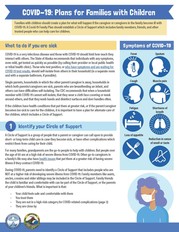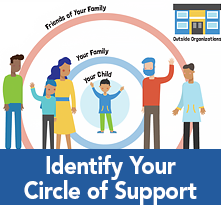Looking for insights into Alaska's COVID-19 response?
DHSS Insights is a new blog that provides timely, interesting, health and social services information. Get the behind-the-scenes news about Alaska’s COVID-19 response and other efforts to protect the health and well-being of Alaskans.
Resource highlights from DHSS's COVID-19 website
-
Circle of support
Do you have a plan for what to do if any of the caregivers in your family become sick with COVID-19?
-
Coping with stress
Well-Being Alaska offers healthy ways to cope, encourage self-care, and reduce stress.
-
Precautions for at-risk groups
Alaskans 65 and older and anyone with an underlying medical condition should continue to reduce their risk of exposure to COVID-19.
-
Family and child well-being
The broad impacts of COVID-19 are elevating the risk of child abuse and neglect in Alaska.
COVID-19 Planning for Families with Children
September 2, 2020 — You’re feeling sick, it’s the middle of a pandemic, your two-year-old is jumping on you, and your six-year-old needs help with online school work. You’re scrambling to figure out where to get tested for COVID, how to keep your kids safe and fed, and how to manage it all if it gets any worse. Many parents have found themselves in difficult situations like this. While these are inevitably stressful times, having a plan can help reduce some of the burden of that stress.

September is Preparedness Month, and parents and caregivers are having to prepare in so many new ways during this pandemic. The “Circle of Support” resource helps walk families through creating a plan for their children if the parents or caregivers get sick with COVID-19.
Created by State and non-profit partners, this helps you identify your Circle of Support (a group of people that you can call on to provide child care), what to include in your plan, when to activate your plan, and how to find help outside your circle from organizations, if needed. It includes step-by-step guidance on symptoms, testing, and isolation, as well as guidance on what to put into a “go-bag” for your children and considerations of how to choose people for your Circle of Support.
|

Choosing emergency caregivers
What makes a COVID-19 plan different than many other emergency plans are the virus-specific considerations in choosing emergency caregivers. You want to avoid sending your children to an adult who might be at greater risk of complications from COVID-19, such as someone over age 60 or someone with diabetes, heart conditions, obesity, conditions that compromise their immune system, or other concerns.
This user-friendly, engaging plan, the worksheet that goes along with it, and the additional worksheet and resource list for children with disabilities, are all designed to work for as many families as possible. The Circle of Support guide is inclusive of single-family households or households where one parent is deployed, households with elders present, households with breastfeeding infants, co-parenting arrangements, and more. For public health guidance to be useful, it has to be inclusive and easy to use, no matter what your family looks like.
|
Multilingual resources
The resource is available not only in English, but in Spanish, Samoan, Hmong, Somali, Tagalog, Russian, and Korean. You can find it in each of these languages on the Circle of Support webpage.
In addition, there are two videos in which real Alaska parents talk through how they use this plan for their families, which you can find on the Alaska DHS/EM YouTube channel, both in Spanish and in English.
Your circle of support can help set your mind at ease
The COVID-19 pandemic is difficult on all of us, and families are stretched thin. Having a plan, having bags at the ready, and checking in regularly with the people in your Circle of Support can help set your mind at ease that if you were to get sick, your children would be in safe, trustworthy hands.
More tips from DHSS Insights
|